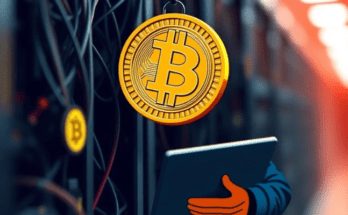Over the course of the last two years digital assets such as tokens, better known as NFTs have begun to interest millions of people. At first considered another craze similar to cryptocurrencies, NFTs are now hitting new records: some pieces have been sold for millions of dollars. Talks about the applicability and worth of NFTs do not stop at art; they are now extended to virtual real estate. In this article, let us first demystify NFTs and then take a deep look at what can make an NFT valuable.
Explaining what Non-Fungible Tokens (NFT) are
NFTs are the digital tokens that are used to give ownership rights of virtual or physical products ranging from art to collectibles and even real estate. One of them is based on blockchain technology, which means that every token is fully unique and easily recognizable. These tokens are different from traditional Blockchain-based currencies such as Bitcoin and Ethereum, where each token is replaceable with another, or put in other terms, these are non-fungible tokens. The reported characteristic has turned NFTs into one of the top domains suitable for artists, creators, and collectors willing to earn money on digital goods.
The Emergence, Adoption & Expansion of NFT Markets
Since the start of trading in the NFT market in 2014, this market has continued to expand. Ethereum, OpenSea, Rarible, and other NFT platforms have made it easier for artists and collectors to create, purchase and sell digital artwork. The total sales in the NFT market were $250 million in 2020; this figure is up from $30 million in 2019, a growth of nearly 700%. The growth in the following year was recorded as well, with sales rising over $2 billion by mid-year of 2021. With the growing popularity and higher values of NFT, new opportunities appeared to create new sectors such as virtual real estate, virtual fashion, and digital collectivism.
Factors Influencing NFT Value
Some of the considerations when it comes to an NFT asset, includes scarcity, condition, use case, and the blockchain on which it is developed. An NFT is rare, which means that it has no peers; therefore, that matter makes an NFT valuable in the market. This fact means that a unique work of art, created electronically, will normally be worth more money than a copy of that work of art or a work of art made in multiples. Thereby, the quality of an NFT – or its aesthetic value and how well it was executed might help in establishing its market value. In many cases, an NFT is likely to draw more attention if it is more visually appealing, or has outstanding beneficial functions, than a simple one.
Another factor that defines an NFT’s value is the utility of the asset: does it have any purpose? Because of this, NFT can embody no only digital goods but also the right to receive particular privileges, benefits or services. A good example of this would be an NFT for a concert virtual ticket that comes with things like a pass to the backstage, or some promotional merchandise. If a token also has use other than solely holding it then the value of the token can be raised. Finally the digital environment on which our NFTs are developed can also influence their value. While some platforms are relatively new and have a potentially lower public image, other platforms are more grounded and reputable, adding more values to token created under their blockchains.
Assessment of Potential of NFT Investment
NFTs as an investment is very risky all told, you should do your research very well and do not put your hard earned capital into it. There are factors that any potential buyer needs to decide whether to invest in the project or not, these include the whitepaper, project team and environment. The value should also know how to assess the current and future potential of the NFT as a scarce and useful asset. Also the investments in NFTs are risky and need some analysis before commercializing like fraud, vulnerabilities of smart contracts and market manipulations.
The place of NFTs in the Contemporary Economy
Today, blockchain has provided people with the opportunity to create a new economy in the form of NFTs. As digital assets, NFTs have created new avenues for monetization from owning and trading these tokens. As for the emergence of new economies the appearance of new forms of doing business, including decentralized autonomous organizations which are based on the use of blockchain technology.
Pros and Cons of NFTs
Still, there are critics of the NFT market analysis and the potential of this type of token is clearly seen. Such a market is heavily criticised as relying more on speculation and that the inherent value of all cryptocurrencies is questionable. Some have also pointed at the environmental costs of NFTs: most are based on the Ethereum platform, which uses proof-of-work algorithms. There’s controversy over the fraud even because some famous art people create new art and put it as NFTs but the other person does that.
Conclusion
From this case, NFTs shift the pattern in thinking about digital ownership and asset value. Its increasing growth and acceptance has proved that there is market for specialized and genuine online commodities that can be bought, sold and exchanged like any other tangible goods. Nevertheless, hedging is an emerging market that is still exposed to a lot of risks such as speculation, fraud, and environment. It will be important for participants as the market advances to develop an appreciation of value of such tokens and the qualities that define their value. This alone makes it possible to reveal all the potential of Non-Fungible Tokens and create the proper economic model for the digital world.




